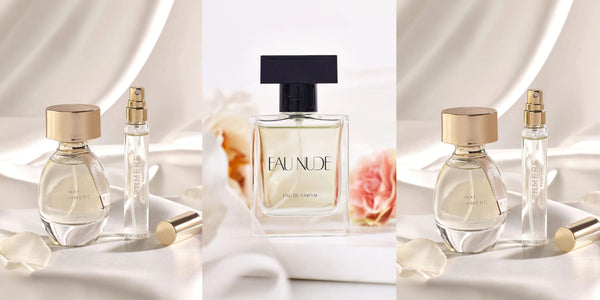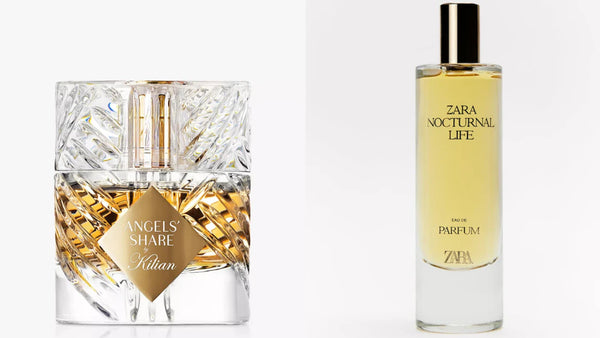What Does Ambergris Smell Like?

What Does Ambergris Smell Like? An Exploration of Its Unique Scent
Ambergris, a mysterious and highly prized substance found in the depths of the ocean, possesses a scent that has captivated perfumers and fragrance enthusiasts for centuries. Its unique aroma, often described as earthy, musky, and sweet, has made it a coveted ingredient in the world of perfumery. In this article, we will delve into the multifaceted olfactory experience of ambergris and unravel the secrets behind its alluring scent.
Understanding Ambergris: A Brief Overview

Before we embark on our olfactory exploration, let us first gain a comprehensive understanding of ambergris itself. Ambergris is a waxy substance that forms in the digestive system of sperm whales, acting as a protective coating for the indigestible parts of their diet. Over time, this substance is expelled by the whale and makes its way to the ocean's surface, where it eventually washes ashore. Despite its unconventional origin, ambergris has come to be highly prized for its aromatic qualities.
Ambergris, often referred to as "floating gold," has captivated the imagination of humans for centuries. Its mysterious journey from the depths of the ocean to the sandy shores has inspired countless tales and legends. The allure of ambergris lies not only in its rarity but also in its unique composition and captivating scent.
The Origin and Composition of Ambergris
Ambergris originates from the complex digestion process of sperm whales, where it forms as a result of chemical reactions and interactions with intestinal enzymes. As these majestic creatures feast on a diet consisting mainly of squid and other marine organisms, their bodies undergo a remarkable transformation. The indigestible beaks and other hard parts of their prey become encased in a sticky substance called ambergris, protecting the whale's delicate digestive system.
Composed predominantly of ambrein, a substance created from the oxidation of the whale's bile, ambergris is also infused with a myriad of organic compounds. Within its intricate structure, one can find marine fatty acids, proteins, and various fragrant molecules that contribute to its unique aroma. It is this complex blend of elements that gives ambergris its enchanting allure.
The Rarity and Value of Ambergris
Due to its scarcity and the unique circumstances surrounding its creation, ambergris holds immense value in the perfume industry. The rarity of ambergris, coupled with the increasing demand for its mesmerizing scent, has led to its reputation as one of the most sought-after ingredients in luxury fragrances.
Throughout history, ambergris has been treasured by perfumers and connoisseurs alike. Its rarity and distinctive aroma make it a prized possession, often associated with opulence and luxury. The scarcity of ambergris stems from the fact that it can only be found in a small percentage of sperm whales, and even then, not all individuals produce it. This makes each discovery of ambergris a truly remarkable event, adding to its allure and value.
As the perfume industry continues to evolve, the demand for unique and captivating scents grows. Ambergris, with its complex and alluring fragrance, remains a highly sought-after ingredient. Perfumers carefully incorporate this precious substance into their creations, adding depth, longevity, and a touch of mystery to their perfumes.
The Unique Scent Profile of Ambergris

When confronted with the aroma of ambergris, one is immediately struck by its intriguing complexity and distinctiveness.
Initial Impressions: The First Whiff of Ambergris
The first encounter with ambergris may invoke a mix of curiosity and surprise. Its initial impression is often described as a blend of marine freshness, reminiscent of oceanic breezes and sea spray, entwined with warm and earthy undertones.
The Evolving Scent: How Ambergris Changes Over Time
An extraordinary aspect of ambergris is its transformative nature. As the substance ages and matures, its scent undergoes a remarkable metamorphosis. The initial marine notes gradually give way to a mellower, woodsy aroma, retaining a hint of sweetness. This transformation is attributed to the molecular changes and fragrance interactions occurring within the ambergris over time.
The Role of Ambergris in Perfumery
Ambergris has long held an esteemed place in the world of perfumery, lending its unique scent profile to an array of compositions, both ancient and modern.
The History of Ambergris in Fragrance Creation
Ambergris has been utilized in perfumery since antiquity. Ancient civilizations prized its alluring aroma and incorporated it into their fragrant concoctions. Over centuries, the scent of ambergris gained prestige and became synonymous with luxury and sophistication.
Modern Uses of Ambergris in Perfume Industry
In contemporary perfumery, ambergris continues to play a significant role as a fragrance ingredient. Its captivating scent adds depth, complexity, and a touch of sensuality to various compositions. Perfumers carefully blend ambergris with other natural and synthetic ingredients to create unforgettable olfactory experiences.
The Science Behind the Scent of Ambergris
While the aroma of ambergris is undeniably captivating, it is intriguing to explore the scientific factors that contribute to its olfactory allure.
Chemical Components Contributing to Ambergris' Smell
Ambergris owes its unique scent to a combination of chemical components. Ambrein, the primary compound, imparts its characteristic earthy and musky aroma. Additionally, the presence of various fragrant molecules, such as isobutyl quinoline and methyl ionone, contributes to the overall complexity and allure of ambergris.
The Impact of Aging and Environment on Ambergris' Aroma
Aging and environmental factors deeply influence the scent of ambergris. As the substance interacts with air, sunlight, and water, its fragrance evolves, creating a symphony of olfactory notes. The specific conditions under which ambergris matures can result in subtle variations in its aroma, making each find unique and precious.
Debunking Myths Around Ambergris' Smell
Ambergris, with its enigmatic allure, has garnered its fair share of myths and misconceptions over the years. Let us unravel the truth behind these beliefs.
Common Misconceptions About Ambergris' Scent

Contrary to popular belief, ambergris does not possess a faecal or unpleasant odor. This misconception arises from its origin within the digestive system of whales. In reality, the scent of ambergris is far more complex, intriguing, and, for many, irresistibly alluring.
The Truth Behind the Myths: What Ambergris Really Smells Like
The aroma of ambergris is best described as a fusion of marine accords and earthy musk, with subtle undertones of sweetness woven through its scent profile. Its allure lies in its unique ability to evoke a sense of mystery, drawing those who encounter it into its enchanting embrace.
In conclusion, ambergris holds a special place in the world of fragrance due to its unparalleled scent. From its origin within the depths of the ocean to its transformative aging process, ambergris captivates our olfactory senses with its intriguing complexity. Whether used in ancient perfumes or modern creations, this enigmatic substance continues to be cherished for its unique aroma. So, if you ever have the opportunity to experience the scent of ambergris, be prepared to embark on a transformative olfactory journey unlike any other.




